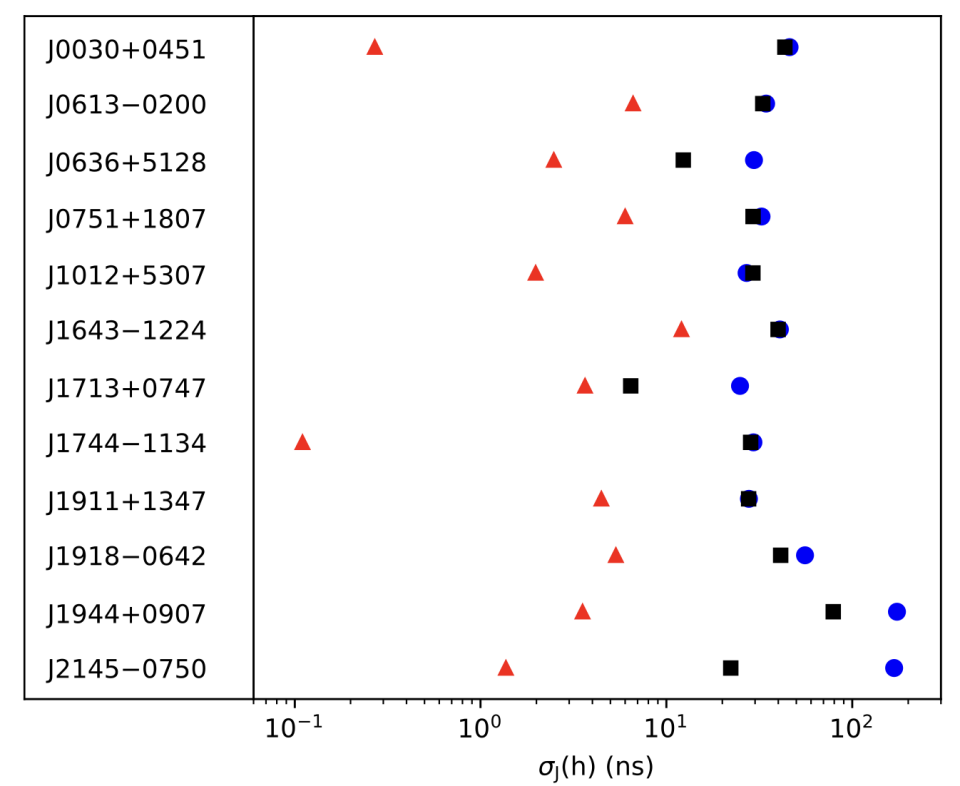

Improving timing precision of millisecond pulsars using polarization
Pulsar timing enables the most stringent tests of fundamental physics. By monitoring the pulse times of arrival (ToAs) of an ensemble of stable millisecond pulsars (MSPs), known as a pulsar timing array (PTA), it is possible to detect nanohertz gravitational waves (GWs). The success of GW detection with PTAs requires the highest timing precision possible.
The timing precision of a pulsar is limited by many noise contributions, including those introduced by the pulsar itself, the interstellar medium along the line of sight, and the measurement process. On short timescales, the noise is typically dominated by white noise, which includes radiometer noise, jitter noise, and scintillation noise.
WANG Shuangqiang , an associate research fellow at the Xinjiang Astronomical Observatory (XAO) of the Chinese Academy of Sciences (CAS), together with collaborators, used data obtained from the Five-hundred-meter Aperture Spherical Radio Telescope (FAST) to carry out a study of white noise in MSPs. The study was published in The Astrophysical Journal.
The researchers presented measurements of the radiometer noise, jitter noise, and scintillation noise of 12 MSPs that are part of the International Pulsar Timing Array sample. They found that different pulsars show different levels of jitter noise. The contribution of scintillation noise is likely negligible, and jitter noise is larger than radiometer noise, making it the dominant component in white noise. Therefore, mitigating the jitter noise is important for the detection of GWs.

Figure 1. Summary of white-noise components for 12 pulsars. The radiometer noise, jitter noise and scintillation noise are shown as black squares, blue circles, and red triangles, respectively.
Contact: Shuangqiang Wang
Xinjiang Astronomical Observatory, Chinese Academy of Sciences.
Email: wangshuangqiang@xao.ac.cn
Article link: https://iopscience.iop.org/article/10.3847/1538-4357/ad217b
Attachment Download: